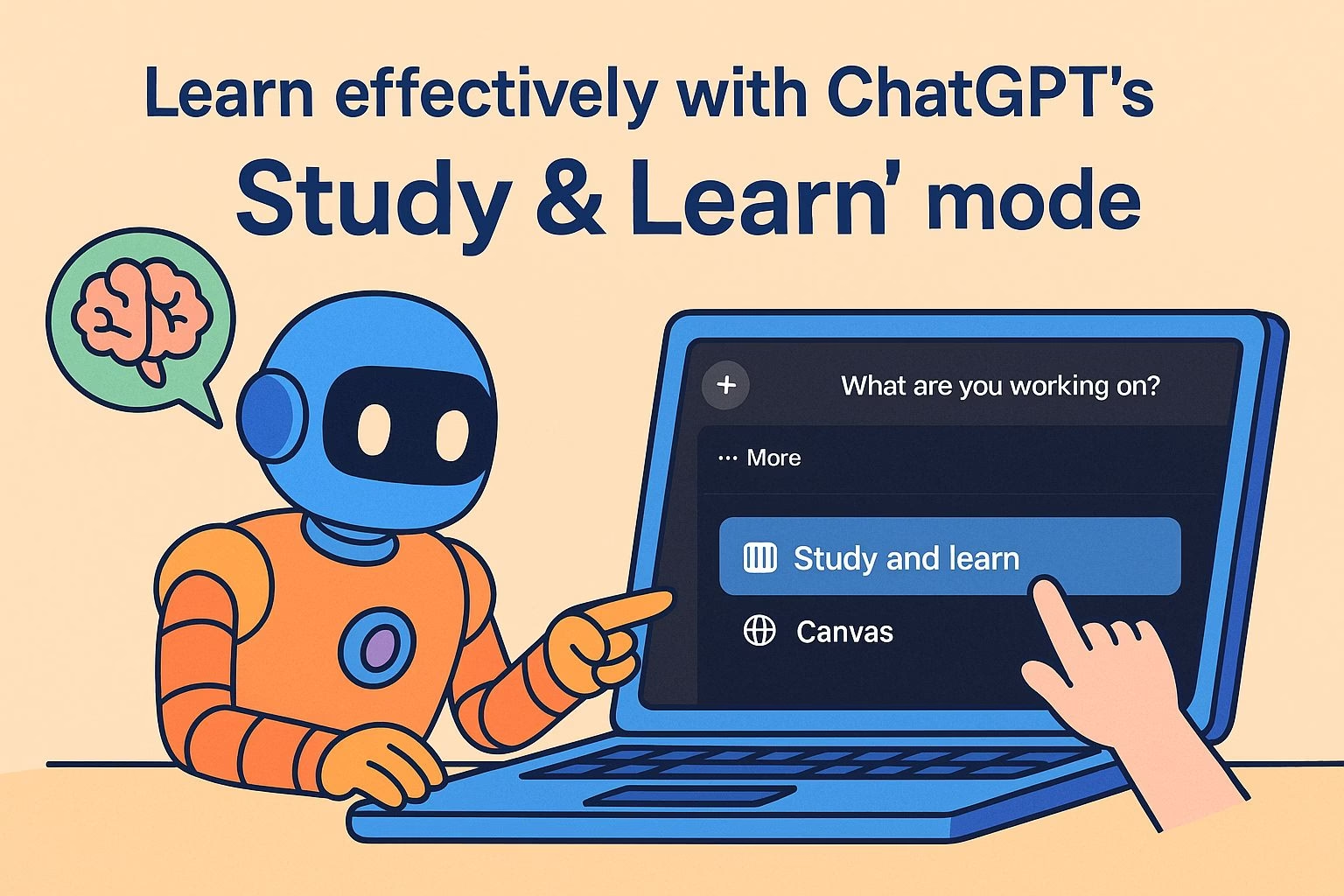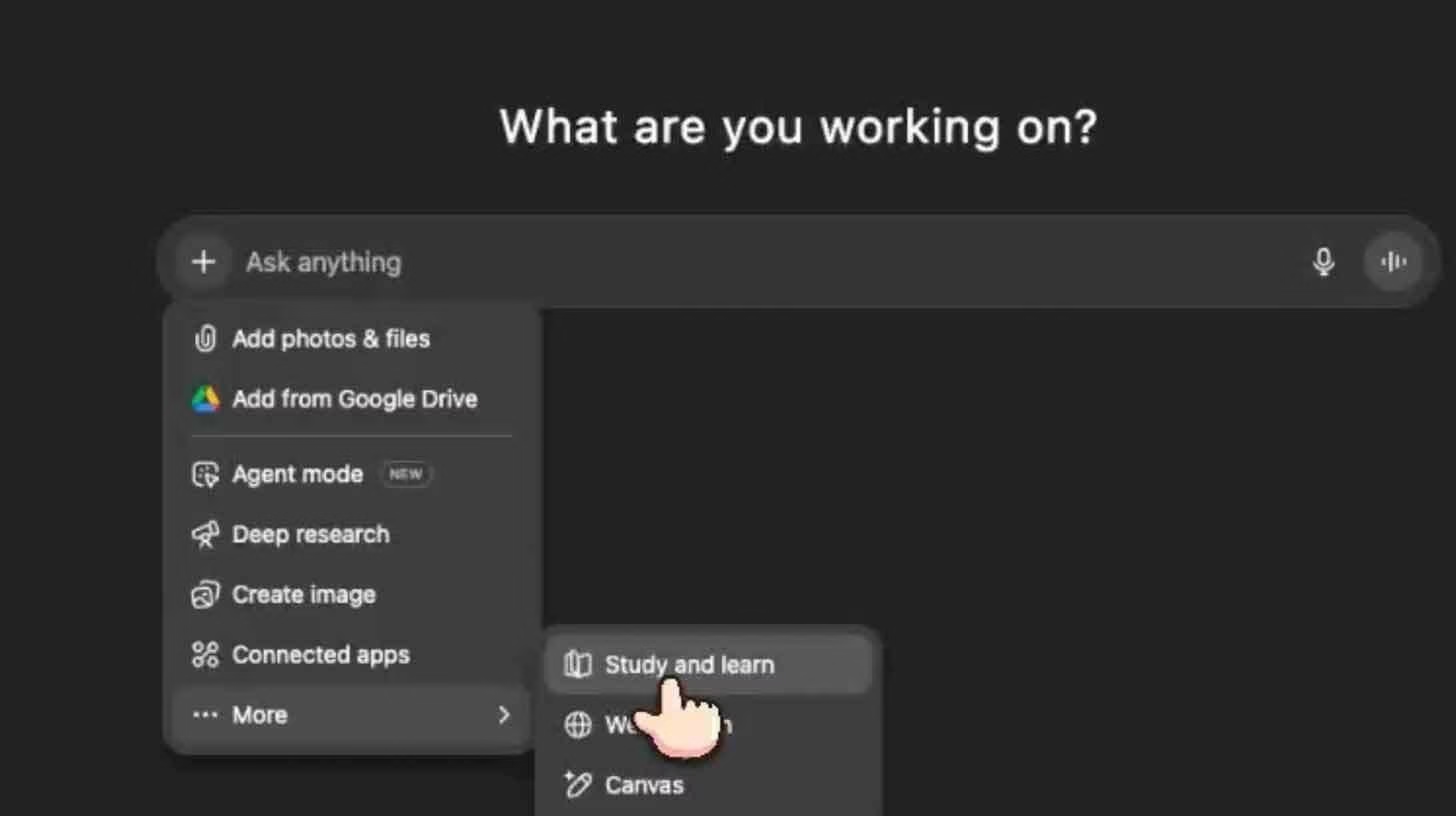How to Study and Learn Effectively with ChatGPT
Learning doesn’t have to feel like memorizing answers from a textbook. With ChatGPT’s “Study and Learn” mode, you can turn the chatbot into a personal tutor that guides you step by step through complex topics.
Instead of copying solutions, you interact with each part of a problem, test your understanding with quizzes, and save your sessions as notes you can return to later.
This tutorial will walk you through how to set up Study and Learn mode, how to structure your prompts for maximum learning, and how to keep your sessions engaging with useful variations.
RoboRhythms.com has found this approach works especially well for learners who want to retain knowledge instead of just rushing through answers.
Quick Reference Summary
Enable Study and Learn mode under GPT-5 → More settings.
Choose a response time: Auto, Instant, or Thinking.
Use structured prompts like “Help me solve step by step” or “Quiz me with short answers.”
Work through guided steps where ChatGPT checks each answer.
Save sessions for notes and revision.
Apply pro tips such as “Find my mistake” or “Same problem, new numbers” to deepen understanding.
This setup makes ChatGPT more than just an answer tool. It becomes an interactive tutor that helps you learn actively and retain information for the long term.
How to Turn On Study and Learn Mode
To get started, open ChatGPT and switch to the GPT-5 model. Click the “+” button on the left, then go to More → Study and Learn.
Once enabled, ChatGPT shifts into tutor mode where it guides you step by step.
You’ll also see options for response time:
-
Auto: balances speed and detail.
-
Instant: good for simple prompts and quick checks.
-
Thinking: lets ChatGPT provide more detailed reasoning and scaffolding.
For example, if you’re solving a math problem like find the area of a circle with radius 5 cm, using Thinking mode gives you hints at each stage instead of just giving the formula and final answer.
How to Structure Your Prompts
The key to learning with this mode is phrasing prompts with structure.
Instead of asking “What’s the answer to this question?”, try one of these:
-
Step-by-step learning:
“Help me solve quadratic equations step by step. Ask me for each intermediate value before moving on.” -
Quiz mode:
“Quiz me on world history with multiple choice and short answers. Check my response before showing the correct one.”
This approach forces you to think before seeing the solution.
For example, if you’re studying physics, you could write:
“Walk me through Newton’s second law. Give me practice problems, but don’t reveal the final answer until I ask.”
By doing this, you stay engaged and build real understanding instead of memorizing outputs.
How to Practice with Guided Steps
Once you set up your prompt, ChatGPT will guide you like a tutor. It checks each of your answers before showing the next step.
This prevents you from skipping ahead or passively copying solutions.
For example, if you ask for help with algebra, ChatGPT might say:
-
Expand the equation first.
-
Share your result.
-
Only after you submit your step will it confirm and move forward.
This creates a back-and-forth flow where you actively participate in solving problems. You can also ask ChatGPT to pause and give Socratic hints only, which makes you think harder about the logic instead of receiving the full explanation too quickly.
Saving these sessions as study notes is another advantage. You can revisit past problems, see your mistakes, and track how your understanding improves over time.
Pro Tips for Better Learning Retention
To get the most out of Study and Learn mode, combine explanations with active recall. Alternate between asking for step-by-step tutoring and short quizzes.
This variation improves memory and keeps sessions from becoming repetitive.
Here are some useful strategies:
-
Ask for “Same problem, new numbers” to reinforce concepts without memorizing.
-
Use “Find my mistake” to identify weak areas.
-
Try “Quiz me on the last topic we covered” to check retention.
-
Save sessions regularly so you build a personal library of notes.
For instance, if you’re studying biology, you might first ask ChatGPT to walk you through the stages of cell division.
Once you understand, switch to quiz mode and say, “Ask me short answer questions about mitosis.”
This keeps your learning active and ensures you’re not just reading passively.


